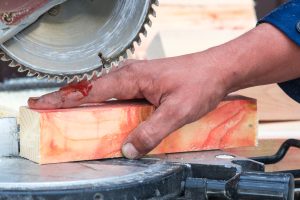Understanding Their Impact and the Value They Bring to Litigation
When consumers are harmed by defective or malfunctioning products, product liability claims often follow. These legal cases can be complex, requiring more than legal arguments—they demand technical expertise to uncover what went wrong. Forensic mechanical engineers are at the heart of this process, using engineering principles and investigative techniques to determine the causes of product failures.
What Do Forensic Mechanical Engineers Do?
Forensic mechanical engineers apply their knowledge of mechanical systems, materials science, and failure analysis to determine whether a product was defective, improperly designed, or misused. Their work is not limited to identifying what broke; it focuses on understanding why it broke and whether the failure was foreseeable or preventable.
These experts play a critical role in clarifying whether a product defect stems from design flaws, manufacturing errors, or lack of proper warnings or instructions. They serve both plaintiffs and defense teams, offering objective insights that help courts and juries understand the technical evidence.
Key Functions in Product Liability Cases
Failure and Root Cause Analysis
Engineers perform detailed examinations of failed products or components, often using microscopy, computer simulations, or material testing to identify fatigue, corrosion, impact damage, or other signs of failure. The goal is to pinpoint the root cause—whether it lies in design, materials, or usage.
Design and Standards Evaluation
Forensic engineers assess whether a product met accepted engineering standards and industry regulations. This may involve reviewing technical drawings, testing procedures, and compliance with safety guidelines such as those from ASTM, ISO, or ANSI.
Manufacturing Process Review
Sometimes the problem is not in the design but in how the product was made. Engineers investigate manufacturing records and processes to check for defects introduced during production, such as incorrect assembly, inadequate quality control, or substandard materials.
Assessment of Intended Use and Misuse
Understanding how a product was used at the time of the incident is crucial. Engineers determine whether foreseeable misuse occurred and whether design safeguards or warnings were adequate to prevent harm.
Expert Witness Testimony
Forensic mechanical engineers often testify in court, providing clear, objective explanations of their findings. Their ability to simplify complex engineering issues into understandable language is vital for informing judges and juries.
Application Across Industries
Product liability cases span many sectors, including:
Automotive: Brake, steering, or airbag failures
Consumer Products: Power tools, appliances, or electronics
Industrial Equipment: Heavy machinery, lifts, or pressure vessels
Medical Devices: Medical devices with mechanical components
In each case, forensic mechanical engineers help establish whether the product failure was due to inherent flaws or external factors.
Garrett Forensic Mechanical Engineers: Reliable Support for Complex Cases
Among the firms providing these services, Garrett Forensic Mechanical Engineers stands out for its balanced, fact-driven approach. With a long history of supporting attorneys, insurers, and manufacturers, their team offers expertise in evaluating mechanical failures across various industries. Known for their clarity in reporting and testimony, Garrett engineers help legal teams navigate technically demanding cases with confidence.
Conclusion
Forensic mechanical engineers are essential allies in product liability litigation. Their analyses help uncover the truth behind product failures, providing objective data that can support or refute claims of negligence or defect. Whether evaluating a catastrophic failure or a subtle design flaw, these experts bring clarity and scientific rigor to the courtroom. Their work ensures that legal outcomes are grounded not just in argument, but in engineering fact.
Recent Posts
- The Benefits of Hiring a Forensic Expert — with Garrett Forensics in Focus
- Collaborating Experts: When Forensic Engineers and Attorneys Work Together
- Product Failure Analysis: When Consumer Devices Become Courtroom Evidence
- Forensic Electrical & Fire Investigation Collaboration: When Multidisciplinary Expertise Saves the Case
- Biomechanical Injury Analysis: How Science Proves or Disputes Injury Claims


Leave a Reply